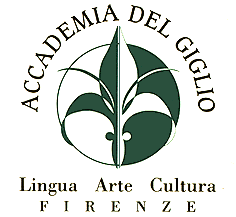 In 1469, after Piero the Gouty’s death, his son Lorenzo became the statesman and the ruler of the Florentine Republic. As his grandfather Cosimo de’ Medici had previously done, Lorenzo aimed at keeping both peace and balance of power among the northern Italian states and, as a result, he managed to create a sense of unity in Italy even if for a short period.
In 1469, after Piero the Gouty’s death, his son Lorenzo became the statesman and the ruler of the Florentine Republic. As his grandfather Cosimo de’ Medici had previously done, Lorenzo aimed at keeping both peace and balance of power among the northern Italian states and, as a result, he managed to create a sense of unity in Italy even if for a short period.
In 1478 Lorenzo had to face the most fearful attack for his government: a conspiracy lead by some members of the Pazzi family, who could also count on the support of the Archbishop of Pisa and his patron Pope Sixtus IV. Lorenzo and his brother Giuliano were agressed during the mass in the Cathedral of Florence. Lorenzo succeeded in escaping, but Giuliano was wounded to death. The conspirators were brutally punished against Lorenzo’s will and the archbishop was lynched.
The consequences were inevitably terrible: the Pope excommunicated Lorenzo and the entire government of Florence, interdicted the city, and eventually he formed a military alliance with King Ferdinand I of Naples, his son Alfonso, Duke of Calabria in order to invade Florence.
Nevertheless, Lorenzo managed to avoid a war thanks to his diplomacy and also with the help of the Medici’s allies in Bologna and Milan: the good resolution of the crisis definitely secured his power and increased his popularity.
 A golden age began for Florence and also for the whole peninsula: Lorenzo’s diplomacy and clemency brought a period of peace, during which arts and culture flourished: it was the beginning of the Renaissance.
A golden age began for Florence and also for the whole peninsula: Lorenzo’s diplomacy and clemency brought a period of peace, during which arts and culture flourished: it was the beginning of the Renaissance.
Besides patronizing artists such as Leonardo, Donatello, Botticelli, Verrocchio and Michelangelo, Lorenzo sponsored the Neo-Platonic Academy that organized cultural meetings for poets like Agnolo Poliziano, philosophers such as Marsilio Ficino and painters like Antonio del Pollaiolo. The Academy made itself known especially for promoting a revival of ancient Greek and Latin culture. Michelangelo took part to several of these academic meetings and there he probably developed his own philosophy whose transposition is clear in his masterpieces such as the Slaves or the David, which we can admire in the Galleria dell’Accademia, one of the museums we visit during our Art History course. Neoplatonic philosophy mainly focused on the potential of Love and considered it as the only way to reach the essence of Beauty, a concept which, for example, Botticelli struggled to grasp in his works throughout his life and which deeply influenced liberal arts.
Florence became therefore the “cradle” of Renaissance in Europe.
Lorenzo himself was an impressive artist too, as his mother Lucrezia Tornabuoni had been. He liked writing poetry, in which he mostly celebrated the youth, the good life and of course love.
However, despite his fame and victories Lorenzo did not turn out to be a good businessman. During his patronage several branches of his bank collapsed because of bad loans. During the last years of his life Lorenzo even embezzled public funds in the attempt of escaping from bankrupt .
Meanwhile in Florence the ideas of a Dominican friar, the charismatic Savonarola, were getting more and more popular. In his sermons Savonarola repeatedly condemned all the arts and music too as creation of the evil. Most of the Florentines returned actually to a more serious and rigorous way of living and Lorenzo could not help but resign himself to a period of austerity and regression.
Lorenzo was also a great family man. He was still young when on Febraury 7th 1469 he married Clarice Orsini, from whom he had nine children. One of these, Giovanni, would have become Pope Leone X, but this is another story..
The Medicis Dinasty: Lorenzo the MagnificentScrivi un commento |







Commenti recenti